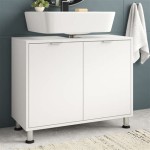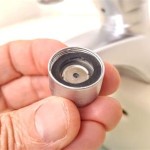Round 16 Bathroom Sink: A Comprehensive Overview
The term "Round 16 bathroom sink" likely refers to a sink basin with a circular shape measuring 16 inches in diameter. This specification is important in bathroom design and renovation for several reasons, impacting aesthetics, functionality, and installation considerations. Understanding the characteristics and implications of a Round 16 bathroom sink is crucial for homeowners, contractors, and interior designers involved in bathroom projects.
Bathroom sinks are available in a wide variety of shapes, sizes, and materials. Choosing the right sink for a particular bathroom involves considering factors such as the overall bathroom style, available space, usage patterns, and budget. While rectangular and oval sinks are common, round sinks offer a distinct aesthetic appeal. The 16-inch diameter provides a balance between a compact design suitable for smaller bathrooms and a functional size for everyday use.
The popularity of round sinks stems from their soft, organic appearance. The absence of sharp corners creates a sense of visual harmony and can complement a variety of bathroom styles, ranging from modern minimalist to traditional and rustic designs. The round shape is often perceived as more forgiving in tight spaces, as it allows for easier maneuvering and reduces the risk of bumping into sharp edges.
Beyond aesthetics, the 16-inch diameter is a practical consideration. It provides sufficient basin area for washing hands, brushing teeth, and other common bathroom tasks without occupying excessive counter space. This size is particularly well-suited for powder rooms or guest bathrooms where space is limited. However, it's important to note that the suitability of a Round 16 sink depends on the specific needs and preferences of the users.
Key Point 1: Material Considerations for Round 16 Bathroom Sinks
The material of a Round 16 bathroom sink significantly influences its durability, appearance, and maintenance requirements. Common materials include porcelain, ceramic, glass, stainless steel, and stone. Each material offers distinct advantages and disadvantages.
Porcelain and ceramic are popular choices due to their affordability, durability, and resistance to stains and scratches. They are relatively easy to clean and maintain, making them a practical option for high-use bathrooms. Porcelain is typically more durable and less porous than ceramic, but both materials are susceptible to chipping if subjected to heavy impact.
Glass sinks offer a modern and elegant aesthetic. They are available in a variety of colors and textures, allowing for customization to match the bathroom decor. However, glass sinks can be more prone to scratches and water spots, requiring more frequent cleaning and maintenance. The transparency of glass also means that imperfections or blemishes inside the sink are more visible.
Stainless steel sinks are known for their durability, rust resistance, and modern industrial look. They are a popular choice for contemporary bathrooms and are often used in commercial settings due to their robustness. However, stainless steel sinks can be susceptible to scratches and dents, and they may show water spots and fingerprints more readily than other materials.
Stone sinks, such as granite or marble, offer a luxurious and natural appearance. They are highly durable and can add a touch of sophistication to any bathroom. However, stone sinks are typically more expensive than other materials and require special care to prevent staining and etching. They are also heavier, requiring stronger support structures.
The choice of material for a Round 16 bathroom sink should be based on a careful evaluation of factors such as budget, aesthetic preferences, maintenance considerations, and the overall design of the bathroom.
Key Point 2: Installation Options for Round 16 Bathroom Sinks
The installation method of a Round 16 bathroom sink affects its appearance, functionality, and ease of maintenance. Common installation options include vessel sinks, undermount sinks, and drop-in sinks.
Vessel sinks, also known as above-counter sinks, sit on top of the countertop, resembling a basin or bowl. They offer a dramatic and stylish look and are relatively easy to install, as they do not require cutting a precise hole in the countertop. However, vessel sinks can raise the overall height of the sink, which may be a concern for users with accessibility needs. They also require a taller faucet to accommodate the height of the sink.
Undermount sinks are installed beneath the countertop, creating a seamless and clean look. They are easy to clean, as there is no rim to trap dirt or debris. Undermount sinks require a solid surface countertop such as granite, quartz, or marble, as the countertop edge is exposed. Installation requires a professional to ensure a watertight seal and proper support.
Drop-in sinks, also known as self-rimming sinks, are installed by dropping them into a pre-cut hole in the countertop. The rim of the sink rests on the countertop, providing support. Drop-in sinks are relatively easy to install and can be used with a variety of countertop materials. However, the rim of the sink can trap dirt and debris, requiring more frequent cleaning.
The choice of installation method for a Round 16 bathroom sink depends on factors such as aesthetic preferences, countertop material, budget, and DIY skills. Each option offers distinct advantages and disadvantages that should be carefully considered before making a decision.
Key Point 3: Faucet Selection and Compatibility for Round 16 Bathroom Sinks
The faucet selected for a Round 16 bathroom sink is crucial for both functionality and aesthetics. Choosing the right faucet involves considering factors such as the faucet style, spout reach, handle type, and finish.
Faucet style should complement the overall design of the bathroom and the sink itself. Common faucet styles include single-hole faucets, centerset faucets, and widespread faucets. Single-hole faucets are ideal for sinks with a single faucet hole, while centerset faucets are designed for sinks with three holes spaced 4 inches apart. Widespread faucets are suitable for sinks with three holes spaced 8 inches apart or more.
Spout reach is the distance from the base of the faucet to the point where the water flows out. It is important to choose a faucet with a spout reach that is appropriate for the size and shape of the sink. A spout that is too short may cause water to splash outside the sink, while a spout that is too long may make it difficult to reach the handles.
Handle type affects the ease of use and aesthetic appeal of the faucet. Common handle types include lever handles, knob handles, and touchless faucets. Lever handles are easy to grip and operate, making them a good choice for users with limited dexterity. Knob handles offer a classic and traditional look, while touchless faucets provide hands-free operation and improved hygiene.
Faucet finish should complement the other fixtures in the bathroom, such as the showerhead, towel bars, and cabinet hardware. Common faucet finishes include chrome, brushed nickel, oil-rubbed bronze, and matte black. Chrome is a durable and affordable option, while brushed nickel offers a warmer and more subtle look. Oil-rubbed bronze provides a traditional and rustic appearance, while matte black offers a modern and bold statement.
Compatibility with the sink is also a crucial consideration. The faucet must be compatible with the number of faucet holes in the sink. For vessel sinks, a taller faucet or a vessel sink faucet extension may be required to accommodate the height of the sink.
Careful consideration of faucet style, spout reach, handle type, finish, and compatibility with the sink is essential for selecting the right faucet for a Round 16 bathroom sink.
Beyond these key points, drainage is another consideration. Standard bathroom sink drains are typically 1.25 inches in diameter. Ensure that the Round 16 sink is compatible with standard drain sizes and that the drain assembly is properly installed to prevent leaks. Pop-up drains are a common choice for bathroom sinks, offering a convenient and easy way to control the flow of water.
Finally, regular cleaning and maintenance are essential for preserving the appearance and functionality of a Round 16 bathroom sink. Use mild soap and water to clean the sink regularly, and avoid harsh chemicals or abrasive cleaners that can damage the surface. For stone sinks, use a pH-neutral cleaner specifically designed for stone surfaces. Promptly wipe up spills and water spots to prevent staining and etching. Regularly inspect the drain and faucet for leaks and address any issues promptly to prevent water damage.

Satico 16 In Ceramic Round Vessel Sink Top Mount Bathroom Basin White Fyat6116 The Home Depot

Aquaterior 16 Round Bathroom Vessel Sink W Pop Up Drain Above Counter Ceramic For Hotel Com

16 In Round Bathroom Sink Porcelain Ceramic Vessel White Al 1805 Vk The Home Depot

Cilindro 16 Inch Bathroom Sink Stone Resin Hansel

Buy Round Vessel Ceramic Bathroom Sink White Kraus Usa

Eago Ba129 16 Above Mount White Round Porcelain Bathroom Sink W Overflow

Drop In White Carrara Marble Bathroom Sinks Rustic

Luxury Round Vessel 16 Inch Ceramic Bathroom Sink Kraus

Portland Collection 16 Inch Concrete Round Vessel Sink

Vigo Anvil Modern White Matte Stone 16 In L X W 5 H Round Vessel Bathroom Sink Com
Related Posts







